At the time of writing in the UK, we were advised to Lock Down last night because of the spread of the Corona virus Covid-19.
We must do all we can now to remain calm and so I am writing this piece especially for those clients wherever you are who normally do not self-maintain and who did not manage to have a retightening in time before this Lock Down happened as you may be wondering when your next session is going to be.
Hopefully the situation will not last longer than the initial 3 weeks but let’s hope people do what they’re supposed to do in order to buck the curb
Don’t panic, your hair won’t just fall off
Firstly, don’t panic.
Panic causes stress and extreme stress can make you literally lose your hair
Now that we have all been advised to stay home and social distance ourselves here’s what you can do with your hair to avoid it becoming matted and looking like a scarecrow.
This is what your regrowth may look like at a regular retightening between 4 to 6 weeks
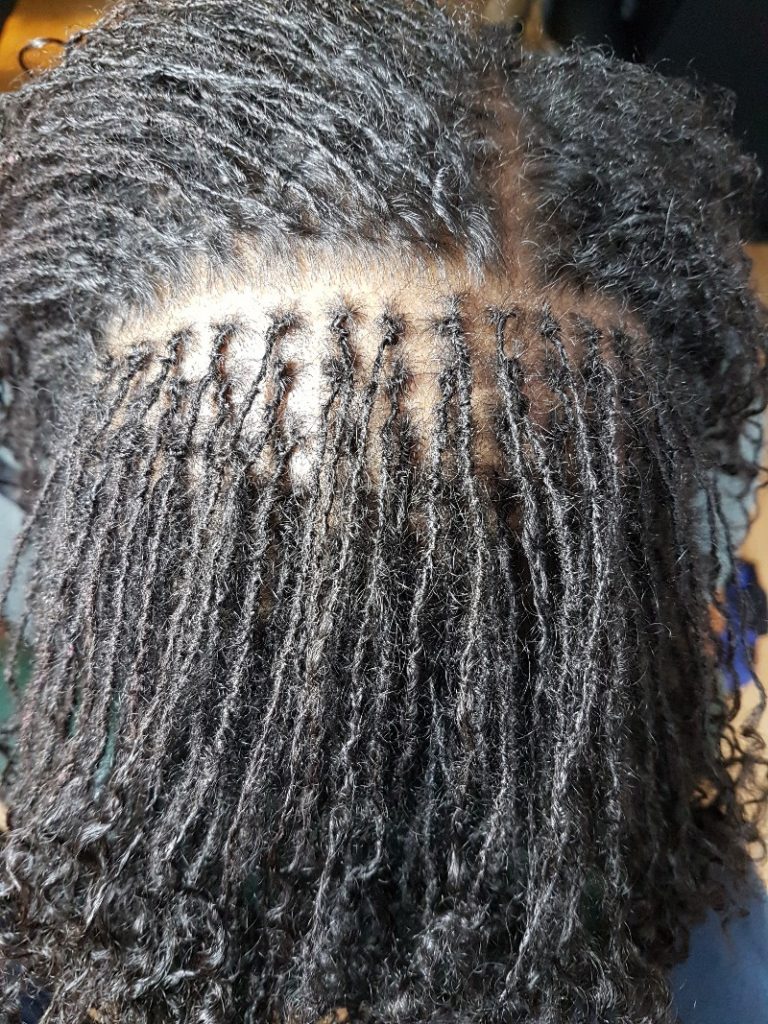
This is probably what your hair may look like at root level by the time you go for a retightening at between 6 to 8 weeks dependant of course on how fast your hair grows.
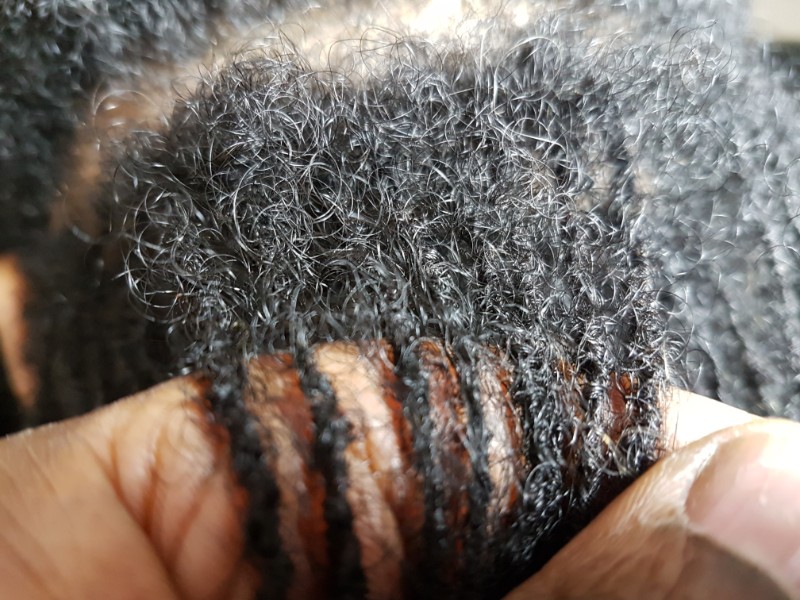
Your hair may look like these if you haven’t had a retightening for about 12 weeks which means you may have missed up to about 3 appointments. Note the matting at the in the section where the comb is and note the separation prior to retightening at the bottom
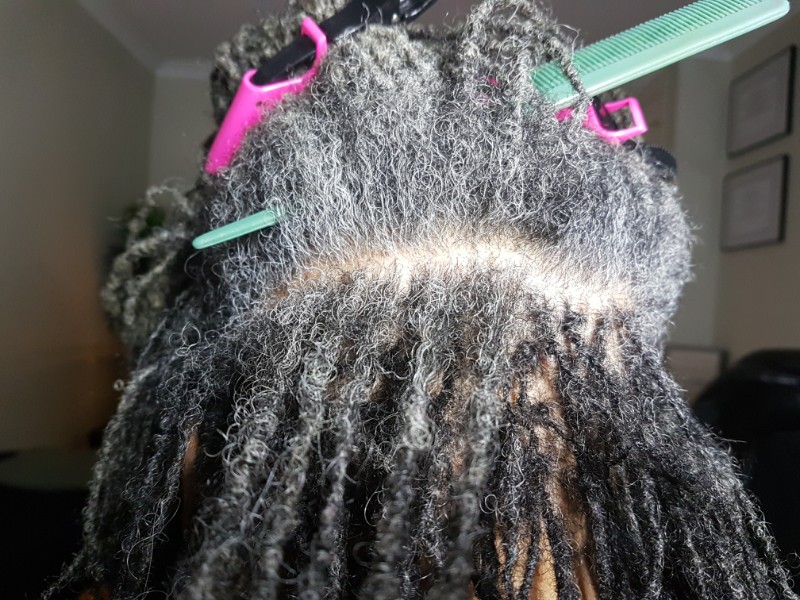
You should not have this unless you have not had a retightening for many many months AND/OR you have not banded & braided and washed out your locks completely. This set of locks took six sessions to re-establish and cost more than the original installation fee.
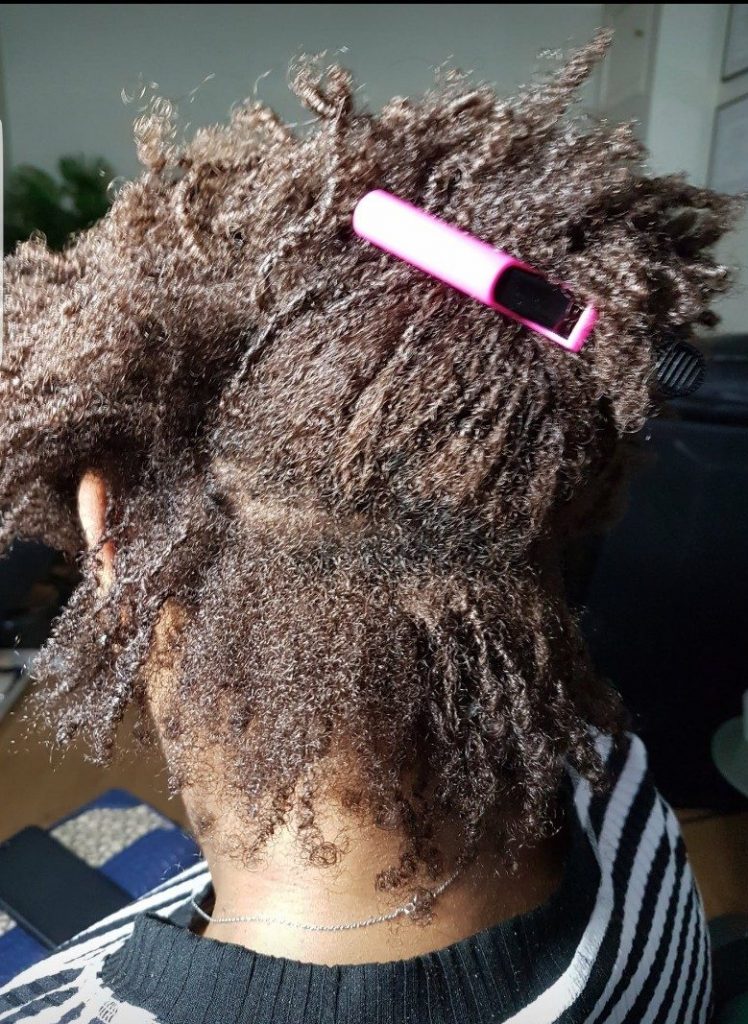
And no consultant would complain if she got this set of locks to retighten at 4 weeks. This is what we are aiming for
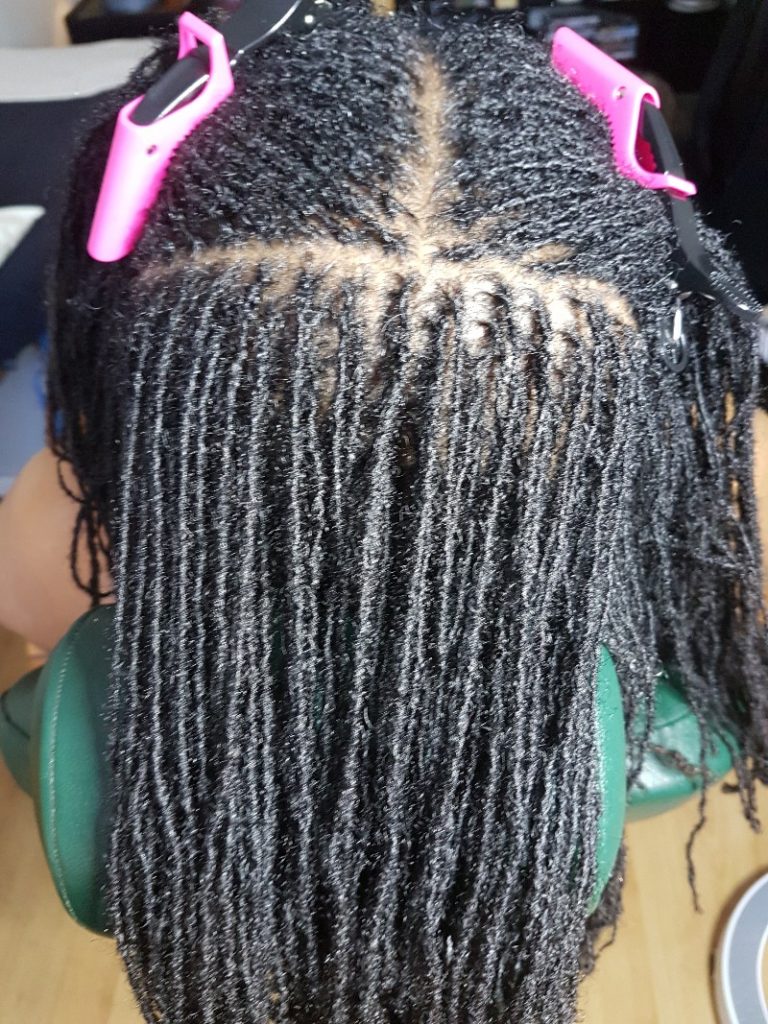
Separating your locks
The number one thing you’re going to need to be doing now is making sure you keep your locks separated at the roots.You know what it’s like when you come for appointments and some of the time is spent just separating each lock and redefining partings at root level before the actual relocking starts and you’re asked “Did you separate your locks?” Now you’re going to have to because if you don’t
- your roots will be matted
- your scalp will be more sensitive come retightening
- your session will take much longer
- fragile locks may be joined
- very fragile locks may be lost
How to easily separate your locks
You can do this simply by holding the individual lock at the root and very gently stretching and twisting in one direction the root between your fingers.
This simple action will keep the locks separated.At your next appointment it will be so much easier and faster to pick up a lock to retighten it rather than spending more time gingerly trying to separate a tangle of dry hairs and redefining your parting sections.
Go easy on the frequency of your shampoos
It is the combination of the locking pattern and washing process which helps hair to matt.So, whether your new growth is long or short, separate your locks thoroughly before AND after washing (whilst damp).
When shampooing you MUST remember to gently but thoroughly rub each individual lock between your finger and thumb at that first inch at root level where the new growth meets the transition point where the retightening finished.
Often at this point there is a build-up of debris from the scalp which needs to be removed. If you can feel a hard bump at that area, it usually indicates a build-up there that you’ll need to rub down until it feels smooth even if you can’t see it. Don’t forget to rinse your hair well.
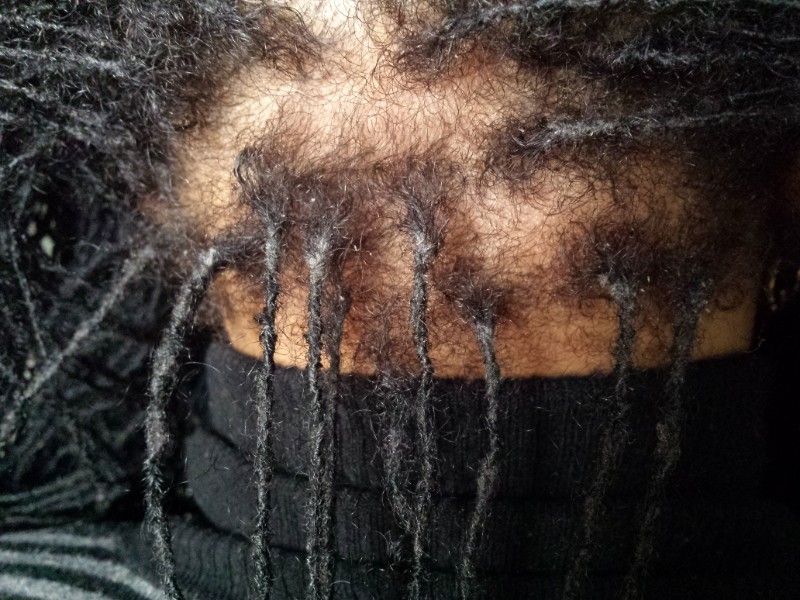
Conditioners
Remember that conditioners are supposed to soften and detangle hair so not using them for awhile may help to slow unravelling and slippage especially if your hair is short, texture is very soft and your curl pattern is longer.
Many clients have short hairs which wriggle themselves out of and in-between the locks at root level and at retightening these are re-woven back into their rightful place.
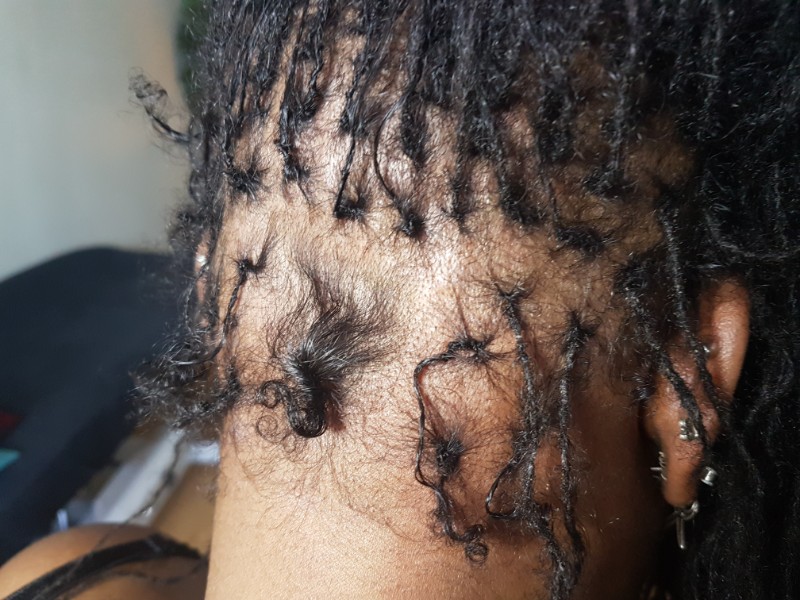
Fragile and thin locks
These are tricky because the length of regrowth is going to affect how these babies hang on in the long term.
If you find one or more of these say around the hairline, gently separate and if there are tiny hairs immediately around the lock include them in the twist to strengthen the root.
Other issues
If you’ve been told that your scalp needs treatment, now is a good time to do so if you are using a product that doesn’t have the most glorious fragrance in the world!
It is still just the beginning of spring time so the coats, sweaters and scarves etc are still with us. Remember to protect the hairline at the back where you can’t see the fluff building up.
Don’t forget your shower cap. Make sure it covers the hair at the nape and all your hairline.
Protective styling
After you have separated and gently twisted each individual lock it’s time to decide how to make them stable as long as possible.
Whether you’re going to be at home or still going to work, you can take a bunch of locks and plait them into a braid or cornrow and secure them with a band so that they don’t unravel or put into a ponytail or bun so they also remain stable and you won’t have to worry about daily styling.
You could wear a braid-out, if that style lasts a long time for you. Consider too wearing a head wrap.This can help to keep out dust and minimise cooking smells but will also keep your locks stable. As a client you know your hair best and you need to think about what you can do to make your life easy, your next retightening as pain free, time efficient and cost effective as possible.
Preparing for your next appointment
The period between your last appointment and the next may be a few weeks so be mindful that your next session may take longer than usual.All clients know how long their regular appointment takes and you may need more than one.If you have gone over your schedule expect that your session will take longer and prepare for that by discussing prior to your appointment how you can book your sessions in order to bring your hair back on track.
Please do get in touch with your consultant if you are worried and have particular concerns.We are here to help.
Finally, stay well. Stay indoors.Practice social distancing.There’s no point worrying about your hair when your life may be at stake. Use this opportunity to eat well, rest, spend time with your family, catch up on a hobby, take an online course.To our key workers who will be on the front line in whatever capacity or industry, we salute you and thank you so much for your service.
We are forever in your debt.
See you on the other side.
